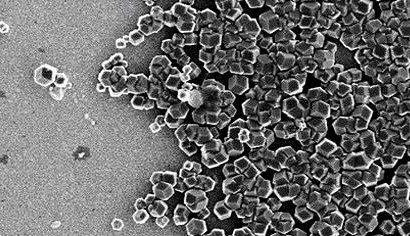Researchers grow Biological Hard Drive from Bacteria
on

Researchers at the University of Leeds have used a type of bacterium which 'eats' iron to create a surface of magnets, similar to those found in traditional hard drives, and wiring. As the bacterium ingests the iron it creates tiny magnets within itself. The team has also begun to understand how the proteins inside these bacteria collect, shape and position these "nanomagnets" inside their cells and can now replicate this behavior outside the bacteria. Using this knowledge the team hopes to develop a 'bottom-up' approach for creating cheaper, more environmentally-friendly electronics of the future.
The magnetic array was created using a protein which creates perfect nanocrystals of magnetite inside the bacterium Magnetospirilllum magneticum. In a process akin to potato-printing on a much smaller scale, this protein is attached to a gold surface in a checkerboard pattern and placed in a solution containing iron. At a temperature of 80°C, similarly-sized crystals of magnetite form on the sections of the surface covered by the protein. The researchers are now working to reduce the size of these islands of magnets, in order to make arrays of single nanomagnets. They also plan to vary the magnetic materials that this protein can control. These next steps would allow each of these nanomagnets to hold one bit of information allowing the construction of better hard drives.


Discussion (0 comments)